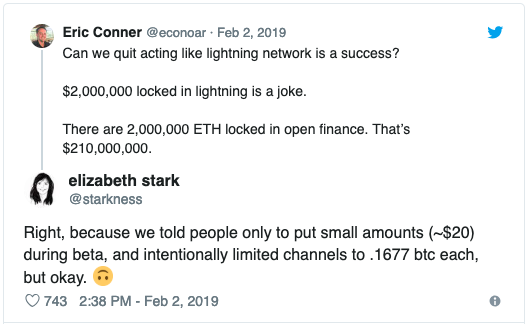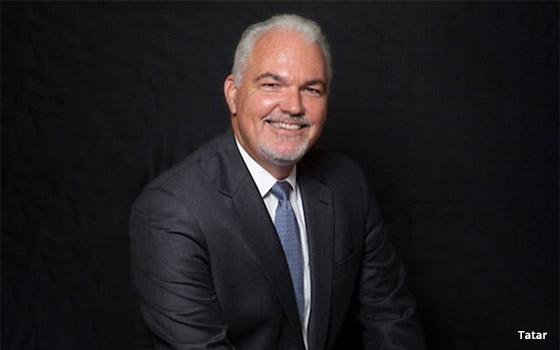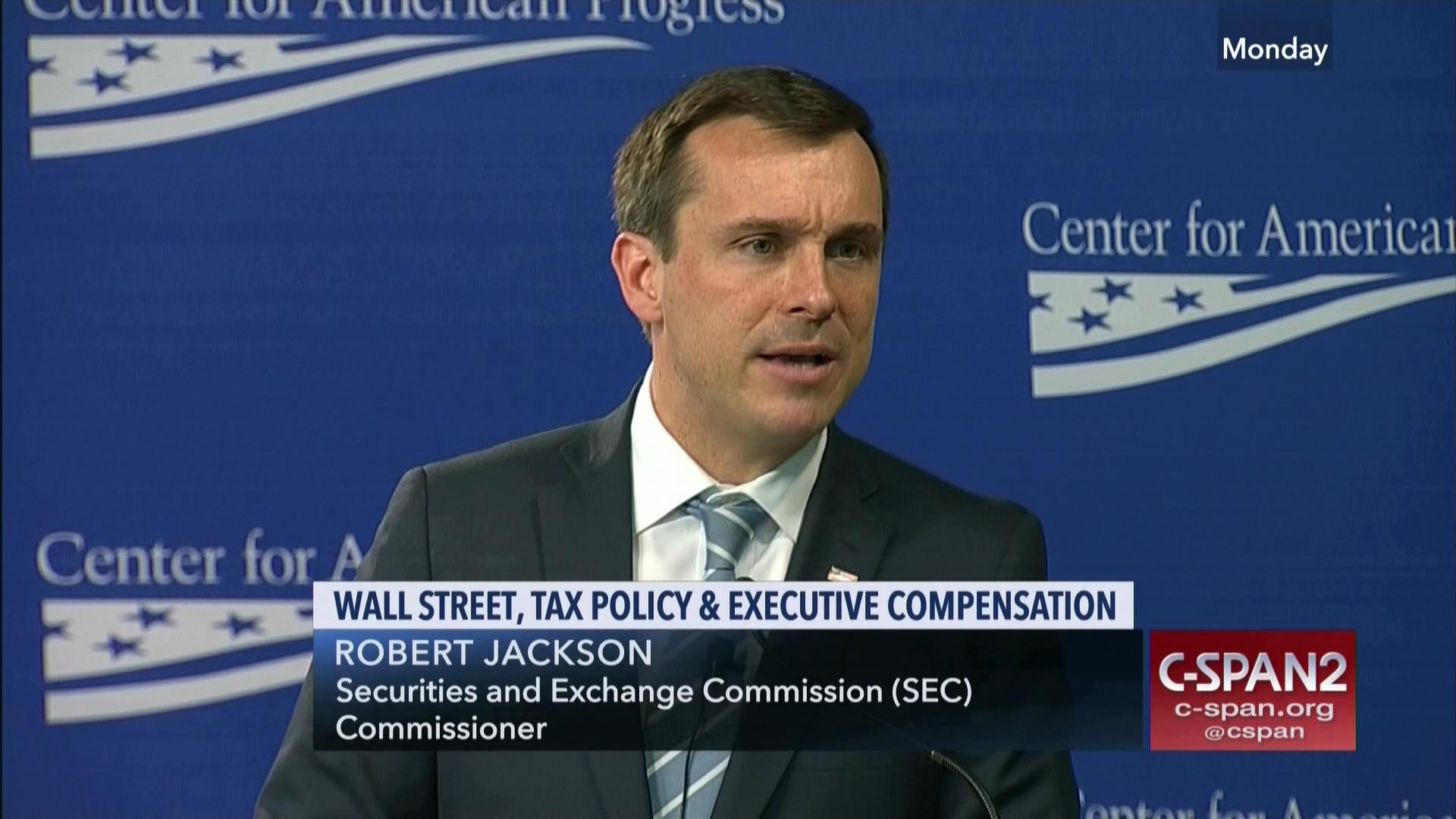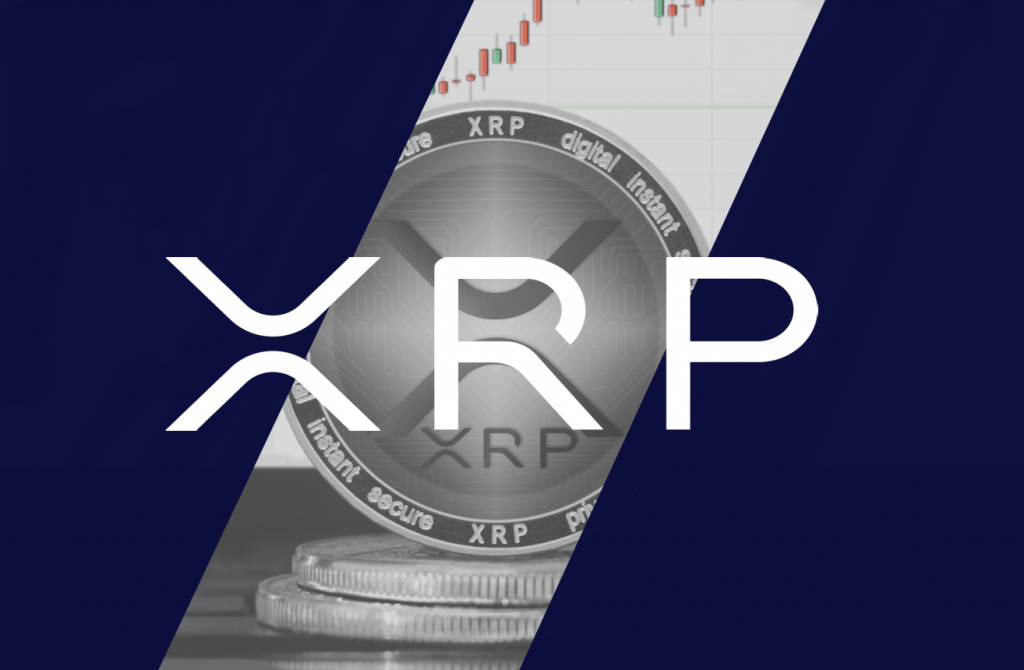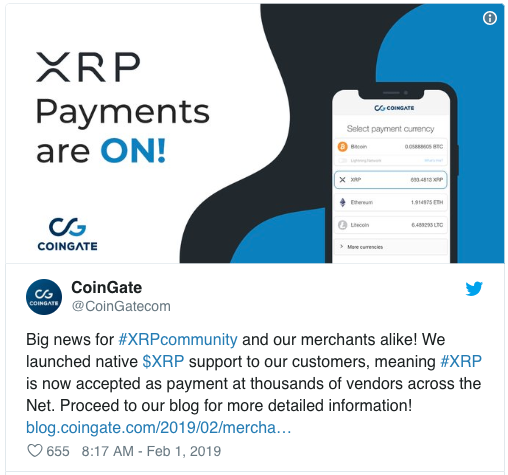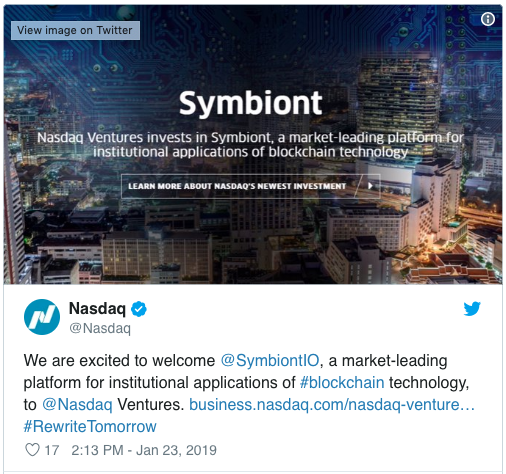Free Money Didn’t Help People Find Jobs, Finland Says
By Kati Pohjanpalo
February 8, 2019, 1:47 AM EST Updated on February 8, 2019, 4:24 AM EST
Distributing free money to the unemployed improves their well-being, but doesn’t appear to have any significant impact on their job prospects.
That’s according to the preliminary results of a landmark experiment in Finland, the first country in the world to trial a basic income at a national level.
The Nordic social welfare champion spent the last two years handing out 560 euros ($635) per month to a randomly selected group of 2,000 jobless people aged between 25 and 58. The basic aim was to explore new ways of distributing social security in a world where more workers are threatened by automation and fewer are likely to take on traditional nine-to-five jobs. The current system is seen as too bureaucratic and often dissuades people from taking on temporary or part-time work.
According to a preliminary assessment published on Friday by the social services agency Kela, the recipients of the monthly stipend spent on average about half a day more in employment per year than the control group.
“On the basis of an analysis of register data on an annual level, we can say that during the first year of the experiment the recipients of a basic income were no better or worse than the control group at finding employment in the open labor market,” said Ohto Kanninen, Research Coordinator at the Labour Institute for Economic Research.
The recipients did however report “less stress symptoms as well as less difficulties to concentrate and less health problems than the control group,” said Minna Ylikanno, lead researcher at Kela. “They were also more confident in their future and in their ability to influence societal issues.”
Feeling Better
Self-perceived assessment of own state of health was better among recipients
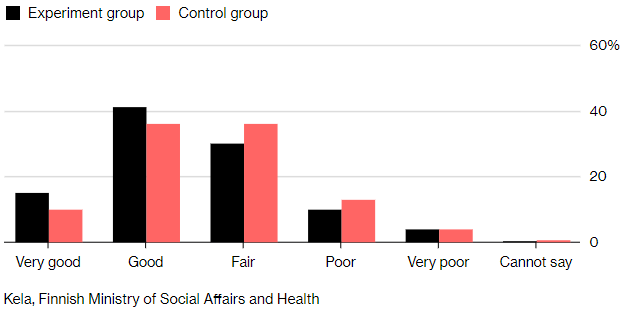
Old Debate
Kela’s results are set to add fodder to a debate that’s been intriguing political philosophers and economists for centuries: What happens when citizens are given money with no strings attached?
Against the background of a global discussion on how to deal with rising inequality, the pilot project has attracted international attention and is being closely watched by economists, sociologists and billionaires including Mark Zuckerberg and Elon Musk.
Read more on the history of a Universal Basic Income
The idea of a basic income as a replacement for means-tested welfare payments has its share of supporters on both the left and the right of the political spectrum. Advocates say it eliminates poverty traps and redistributes income while empowering the individual and reducing paperwork. The concept has inspired Italy’s populist government, which this week started honoring its election promise of a “citizen’s income” for the poor.
Read more on Italy’s Citizens Income
Other countries have taken different avenues, with the U.K. opting instead for a Universal Credit system that replaced six means-tested benefits and tax credits with a single monthly payment.
Finland’s experiment was implemented by the government of Juha Sipila, the country’s first millionaire prime minister, between 2017 and 2018.
Despite solid economic growth and falling unemployment, Finland suffers from an aging population. The country is seen as a trend-setter when it comes to social policy, with its education system and baby boxes (containers full of baby clothes and care products delivered to expectant mothers) admired around the world.
Useful Data
With its road-testing of a basic income, the government wanted to find out whether a basic income could simplify the social security system, eliminate excessive bureaucracy and remove incentive traps. Researchers at Kela also wanted to measure its impact on the participants’ physical and psychological well-being.
Olli Karkkainen, an economist at Nordea Bank Abp, found the results surprising.
“I had expected the basic income experiment to have a greater positive impact on employment because incentives for work were boosted so significantly,” he said in an interview.
Pirkko Mattila, Finland’s minister of social affairs and health, said that despite its success in providing useful data, “the basic income model developed for the experiment is not likely to be adopted as such for more extensive use.”
According to some estimates, a nationwide basic income would add around 5 percentage points to Finland’s public deficit relative to gross domestic product.
Friday’s preliminary results only looked at the first year and focused on statistical data, with a final report not due until 2020.
— With assistance by Leo Laikola, and Brad Cook
Original article posted on Bloomberg.com and written by Kati Pohjanpalo
Posted on Markethive by Jeffrey Sloe
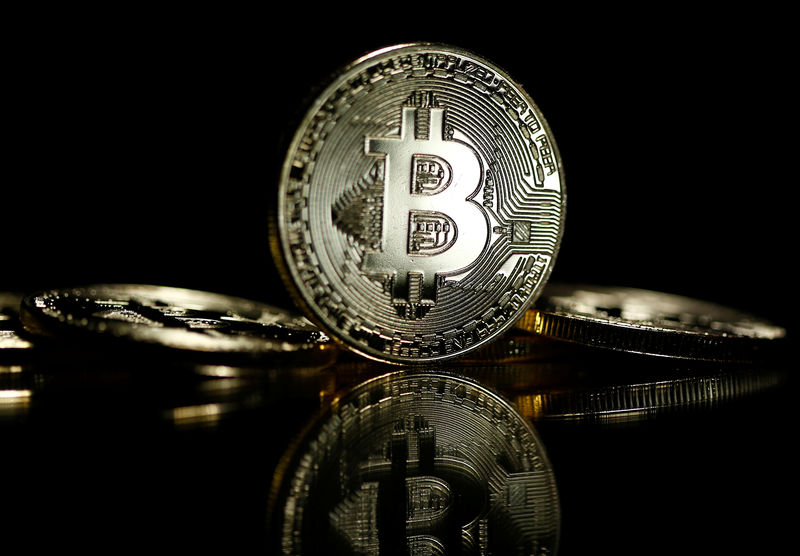




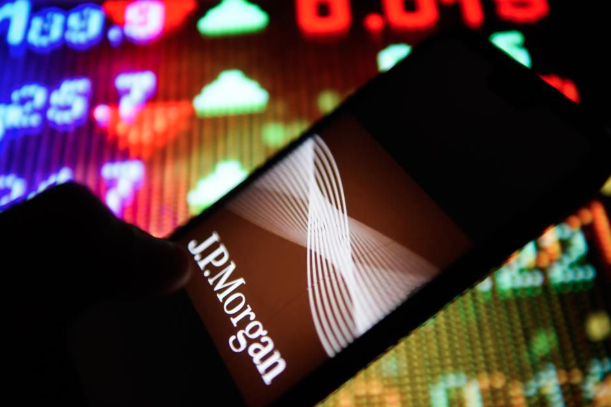 <
<

